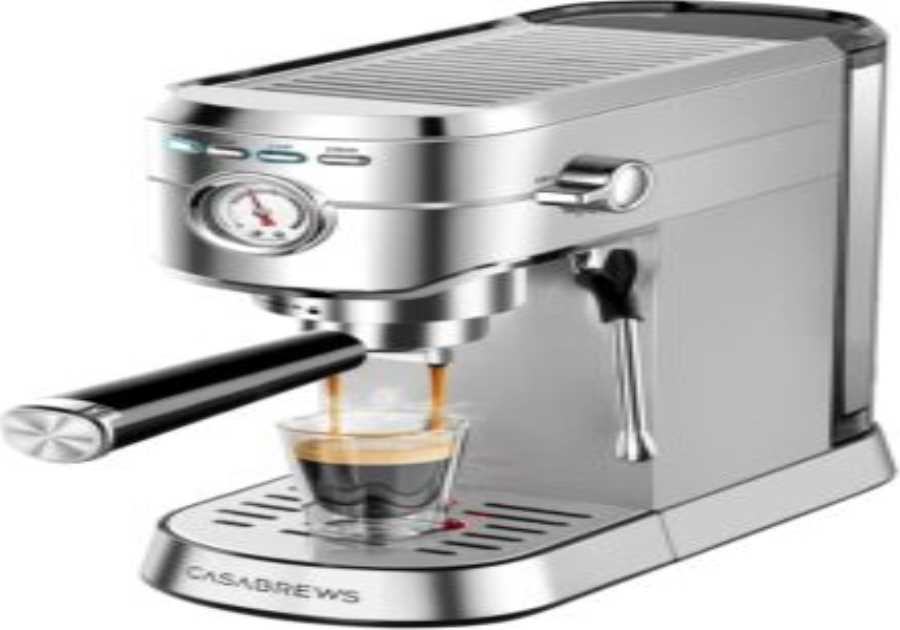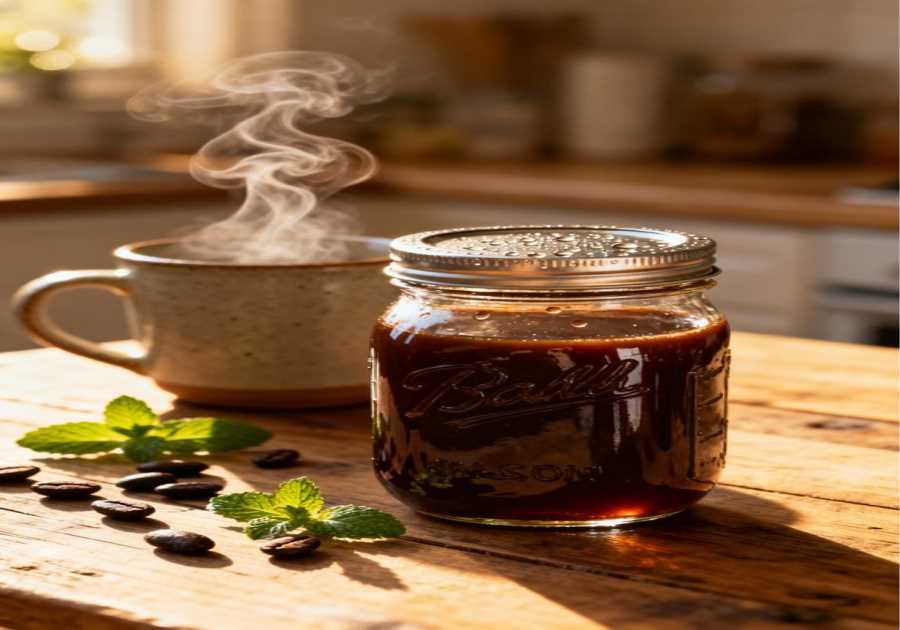So you're looking for the best coffee beans for espresso, hey? How the heck did I know that, is big brother watching, do you need to put a plaster over your laptop's webcam, or is it simply that you wouldn't have landed on this post about the best coffee beans for espresso if you weren't? I'll let you decide ;-).
Which are the best coffee beans for espresso is a very good question, and it's one I wish a lot more people would ask, actually.
The reason I say this is that one of the biggest issues I see with people who're just getting into home espresso, is that they're struggling like mad, some even to the point of forgetting the whole idea of home espresso, and it's largely down to picking the wrong coffee beans for espresso, or for their setup.
Qualifying the Best Coffee Beans for Espresso Question
I'll go into this in much more detail, but first I just wanted to answer the question with a nutshell explanation before explaining in more depth.
If you're new to home espresso, it would seem fair to expect to simply be able to find the best coffee beans for espresso, or to expect that there's simply a type of espresso bean, or to be able to simply ask the question “where to buy espresso beans”, and to be pointed in one particular direction.
It's not quite that simple, though.
Generally speaking (and I'll go into a lot more detail below) the best coffee beans for espresso for anyone who is new to home espresso and/or anyone who has a relatively entry-level espresso setup, are espresso blends. So if you're looking for a really simple answer to this question, there you go – espresso blends are usually the best option when it comes to coffee beans for espresso.
Where it gets confusing though, is there's really no such thing as “espresso coffee beans” – and also there's an increase in “omni roasting” where roasters don't specify that their beans have been roasted with any particular brew method in mind, which can often lead to people who're new to home espresso, struggling to know if they're using the best coffee beans when it comes to their current skills and setup.
“Espresso blend” is simply a label used to describe any blend of coffee beans which have been blended and roasted particularly with espresso in mind.
This doesn't mean you have to go for a super dark roast profile for espresso, as I'll explain, but blends that have been roasted from what I refer to as “medium/dark” or darker tend to be much more forgiving when it comes to the espresso setup and the barista skills of the user.
If you don't buy coffee beans that are sold as an espresso coffee bean, or an espresso blend, there's a good chance you'll end up with medium roast single origin coffee beans, and these can be really quite difficult to extract well, which can lead to beginner home baristas really struggling to get good results from great quality coffee.
There's no such thing as espresso coffee beans
Before we get started, I just wanted to make it really clear that there isn't really any such thing as “espresso coffee beans” as such, and in theory, you can actually use any beans for espresso. This may seem that I'm contradicting myself, given that I've just said that many people struggle due to using the wrong type of coffee beans for espresso, but it just comes down to a few factors:
- Your type of machine
- Your specific setup
- Your barista skills
- Your palate
- How you're drinking your espresso
Machine type:
Really what I'm referring to here, is whether you're using a traditional espresso machine, or a bean to cup espresso machine. When it comes to coffee beans for bean to cup machines, you have to keep in mind that most domestic bean to cup coffee machines only have a handful of grind adjustments, they don't tend to have great quality burrs, and they don't usually have removable burrs.
What this really means is you're quite limited to coffee bean choice with a machine like this. The chances are that you're not going to get the best results with quite a lot of decent quality single origins, especially if it's lighter roasted, and dark roasts aren't recommended either, so the ideal coffee beans for bean to cup espresso machines are within a fairly short range.
My biggest recommendation for bean to cup machines, is to stick to no darker than medium/dark, and many people will probably find that they get the best results from blends. Feel free to try lots of different coffee beans and discover for yourself which works best for your machine and your palate, but you'd be better off sticking away from dark roasts.
The reason for this is simply that bean to cup coffee machines don't usually have removable burrs, so you can't just take the burrs out to clean them. Also, you can't run grinder cleaning pellets or white rice for example, through bean-to-cup machines, as this video from Seattle Coffee Gear explains.
If you do it's likely to result in breaking the brewing unit. The problem, then, is that dark roast beans tend to be oily, the oil can coat the burrs, the burrs end up getting clogged, and with a bean to cup machine, you'll usually have to send it to the manufacturer to be cleaned, not great.
If you do occasionally use darker roast beans with your bean to cup machine, I'd recommend regularly switching to a medium dark (dark brown and matt, vs dark brown and shiny) bean, vs always using oily dark roasts.
I have a coffee bean at The Coffeeworks that is developed specifically for bean to cup coffee machines, which I call the Classic Italian Bean to Cup blend. This coffee bean delivers a classic Italian taste profile that would usually require a dark roast, but it's done with the blend of beans rather than with the roast profile, so this is a medium/dark roast profile that won't gunk up the burrs of your bean to cup coffee machine:
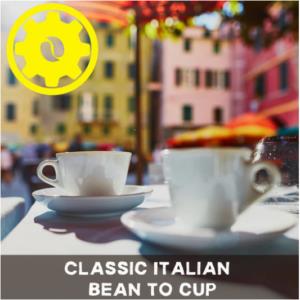
Use Discount Code CBNC25 for 25% Off Your First Order.
If you're looking for coffee beans for your bean to cup machine which delivers a really bold chocolaty flavour profile for mega flat whites & cappuccino, check out the Chocolate Brownie blend. This is my favourite espresso blend from my range, and it's a medium/dark so it won't clog up your burrs.
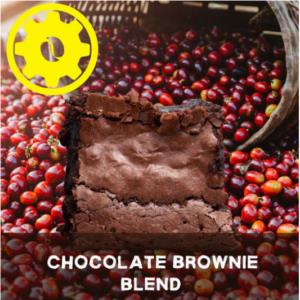
Use Discount Code CBNC25 for 25% Off Your First Order.
If you're looking for something a bit fruity & spicy, Fruitcake blend is another stunning espresso blend which for me is reminiscent of Christmas cake. Again, this is a medium/dark, so It won't release a lot of oil which is going to lead to problems with your bean to cup coffee machine. These blends are all great for traditional machines with stand-alone grinders too, by the way.

Use Discount Code CBNC25 for 25% Off Your First Order.
Your Setup
If you don't have a bean to cup machine, and you have a traditional espresso machine and separate grinder or traditional espresso machine with an integrated grinder, then the coffee beans that are compatible with your espresso machine will depend to a certain extent, on your setup.
This includes, but isn't limited to, how entry-level or premium your setup is.
For more on espresso machine & grinder setups, see:
Best Home Barista Machine & Grinder Setups
What I mean by this is that certain coffee beans are more forgiving than others, so if you're using an entry-level setup, you're probably going to be better off working with a more forgiving coffee bean. Generally speaking, blends are more forgiving for espresso, than single origins – and darker roasts are also more forgiving.
So, again we're speaking quite generally here, but a medium/dark or dark roast espresso blend is usually going to be easier to get great tasting espresso from on a lower end entry level setup, than a medium roast single origin coffee bean.
A medium/dark espresso blend for example is usually easier on the grinder, and often doesn't require as hot a brew temperature to extract well, while some single origins can be a real challenge for entry-level grinders, and can require a higher brew temperature than some entry level espresso machines can deliver.
A good, specific example of this, is the many people who email me or have left comments on my YouTube videos telling me that they're plagued by sour tasting shots with their Sage Bambino plus paired with the Sage dose control pro or smart grinder pro. Usually when I speak to people who're having this issue, they're buying decent quality freshly roasted beans, but they're often single origin and lighter roasted.
Some single origin coffee beans, particularly when they're high-grown and washed processed, are less porous than other coffee beans, and these can be very difficult to work with, if you have an entry level setup. In addition to being difficult to extract as well (which can lead to sour-tasting shots), these beans can be very hard to grind, particularly when lighter roasted, and they're even capable of leading to broken grinders!
Something I hear quite often from people who have Sage grinders or an integrated grinder machine such as the Barista Express or Barista Pro is that with a certain coffee bean their grinder will make a loud clicking noise and will stop grinding. People invariably think they've broken their grinder at this point, but actually, this is a clever feature on Sage grinders to stop them from breaking.
They have something called a slipper clutch, the same kind of thing that is used on cordless drills, for example, to set the level of torque depending on whether you're driving a screw or drilling a hole, and this is there to limit the amount of torque the motor is called to deliver, to that required to grind beans, vs the torque that the motor may be called upon to grind a pebble, for example, or some other hard thing that may have slipped through the net (a diamond if you're lucky!).
Some lighter roast coffee beans can be so hard that this failsafe will kick in, in order to prevent damage to the grinder. If this happens to you, by the way, just back off on the grind size and you'll find it'll grind again, it's grinding finely that tends to cause this with much harder beans, so if this happens you may have to use the rest of the bag of this bean for another brew method, or via dual walled (pressurized) baskets if you have a sage machine, as they usually come with both types of baskets.
It's not only lower end setups that aren't compatible with certain coffee beans, though. Particularly light roast beans require more sophistication where control over temperature and pressure is concerned. For example, the amazing (and definitely not entry-level where cost is concerned) iconic La Marzocco Linea Mini is really not made for light roasts, it's geared up for more traditional espresso blends.
The espresso machines that are most compatible with light roasts are machines such as the Slayer (great, if you have a spare eight or nine grand, and you'll need a high end grinder too), La Marzocco GS3 MP, ACS Vesuvius, or Decent DE1 which is certainly not a low end machine but is the most affordable among these options.
These machines are made for pressure profiling, or flow profiling, which tends to produce the best results for espresso with lighter roasts.

If you're looking to work with light roast coffee beans for espresso on a smaller budget, one of the lowest cost routes is the brilliant Sage Dual Boiler with a very quick, reversible, and almost free mod often referred to as the “Slayer mod” which involves moving a couple of pipes around so that the hot water tap controls the pressure.
Even if you don't want to do the mod, you can still make use of the amazing control over brew temperature and preinfusion pressure and preinfusion time that this machine offers, to get better espresso with light roasts.
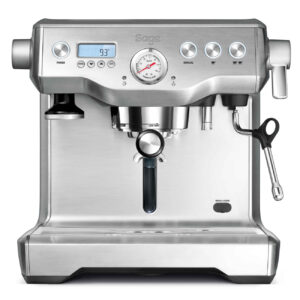
For more on the Dual Boiler, see:
If you're wanting to work with light roasts in particular, because you've tasted espresso made with light roast beans via your favourite speciality coffee shop or a home barista friend, for example, then that's fine, but just keep in mind that you're probably not going to have good results with light roasts unless you use suitable gear.
In my humble opinion, there's no point trying to get good results with light roasts with anything less than the Sage dual boiler paired with a sufficiently capable grinder. If you're using something like the Gaggia Classic, Sage Bambino or Bambino Plus, Rancilio Silvia, and most other machines up to around the one thousand pounds mark, you might struggle with having the required control over pressure and temperature to get great espresso from light roasts, so you'd probably be better off just finding a blend that you love the taste of.
These are the blends I'd recommend, from The Coffeeworks:

Use discount code CBNC25 for 25% off your first order at Coffeeworks
Some other blends to look at:
House Espresso Blend – Pact Coffee

Click Here for £5 off Your First Order
House Espresso Blend – Grind

Use discount code CBGRND33 for 33% off Subscriptions (3 months).
Artisan Blend – Coffee World

Your Barista Skills
Espresso is quite a complex thing, as you're no doubt discovering if you're new to the home barista hobby. A seasoned home barista has the knowledge and skill to call on when working with trickier coffee beans, while a novice home barista won't yet have developed as much skill, and will probably have a much steeper and more frustrating learning curve if they try to cut their teeth on more challenging beans.
If you're new to using a traditional espresso machine, I'd recommend making things a bit easier for yourself by starting out with medium/dark to dark roasted blends.
Your Palate
As I've said, there's really no such thing as coffee beans for espresso, as such – there aren't espresso beans, pour over beans, cafetiere beans, and so on. You can use any coffee beans for espresso, but as I've said, you'd be wise to choose coffee beans that are compatible with your current level of home barista expertise and your current setup.
But in addition to this, you do also need to take your palate into consideration of course. Really, the best coffee beans for espresso are which ever coffee beans make espresso which you enjoy the taste of, the most.
When it comes to the most classic espresso taste profiles, chocolates, caramels, nutty notes, and so on, you're the most likely to get flavour notes like this from espresso pulled using more traditional espresso blends.
If you drink a lot of your espresso based coffees at Starbucks, Costa, or Nero, then you're probably going to be used to the classic Italian espresso taste profile. These beans are usually (not always, but it's common) a blend which includes Robusta, it's common for Italian blends to be 20% or so (sometimes more) Robusta, and to be a dark roast.
If you frequent speciality coffee shops, and especially if you usually drink espresso or Americano/Long black, then your palate may be dialed into something other than the classic espresso profile, and I'd say the majority of people for whom this is the case, would enjoy higher quality medium/dark roast blends and single origins.
There are some people, however, who want to go off the beaten track where espresso is concerned. More often than not, these kind of people are drinking neat espresso or short Americano or long black, and they're looking for really interesting and complex flavour profiles. I'd say it's relatively rare, though, to find a palate like this among a beginner home barista.
Unless you're a real espresso connoisseur, someone who has spent a lot of time developing your palate while drinking neat espresso or black coffee without anything added and who has developed a particular liking for more unusual flavours, often including high acidity (which isn't something that would usually be present in more common “espresso beans”), then you'd probably be better off starting out on the more beaten track of the more “standard” espresso blends and medium/dark roast single origins.
This tends to be a direction that some take once they've jumped down the home barista rabbit hole. If you start out with beginner gear and skills, and gradually upgrade both, your palate will develop as you go along, and some people simply find that they end up enjoying espresso with what many would class as “weird” flavour notes.
I'm generally weird anyway ;-), and I have developed quite an eclectic palate. I usually prefer more standard espresso profiles for milkies (my favourite for flatties & cappuccinos at present is the Coffee Works chocolate brownie blend), but I really enjoy espresso, Americano and long black with “weird” flavour notes. The issue is that the beans that will deliver these kinds of flavour notes usually require high-end setups paired with well-honed barista skills to do them justice.
If you are looking for really interesting lighter roasted coffee beans for espresso, try these:

Use Discount Code CBNC25 for 25% Off Your First Order.

Use Discount Code CBNC25 for 25% Off Your First Order.
How You're Drinking Your Espresso
One of the biggest factors in deciding which coffee beans to use for espresso simply comes down to what you're doing with that espresso. If you're using it as the base of a milky, then the taste you're looking for may be different than if you're drinking neat espresso, Americano or long black.
The main reason for this is that adding stuff to espresso can make a big difference to the way the resulting coffee tastes. For example, if you start out with a funky tasting natural processed espresso, and use that as the base for a flat white or latte, you can end up with a milky that tastes like it's been made with off milk!
I've experienced this several times, in fact when I was recently at a coffee event, one of the exhibitors gave me a really interesting fruity coffee they were really proud of, as a flat white, and it literally tasted like they'd made it with lumpy milk, not great! ;-). As the base of a milky I would usually be looking for a coffee bean that will produce a really bold, tasty espresso with low acidity, and really enjoy chocolaty notes in milkies too.
My recommendation when it comes to the best coffee beans for espresso as the base of milkies would be to go for more traditional espresso blends, as they're generally less acidic so they don't tend to have funky notes which can make milkies taste weird, and they tend to have the power to cut through milk for really tasty flat white, cappuccino, latte and so on.
Kev's Best Coffee Beans for Espresso What The FAQ
Is Espresso stronger than coffee?
This is a bit of a trick question, as espresso and coffee are the same thing. Some people think of “coffee” as filter coffee or cafetiere coffee, for example, and as espresso as something different, but it's just different brewing methods, it's all coffee. But, yes, if what you're asking is, is espresso stronger than other brew methods, yeah, espresso is the method that creates the strongest, most intense coffee.
What roast is best for espresso?
As I've mentioned, this really depends on your machine type, your setup, your barista skills, and your taste buds. Most people, however, will find that a medium/dark to dark roast will produce the best results in terms of the most commonly desired espresso taste profile.
How to grind coffee beans for espresso
You'll need a coffee grinder, but if you're using a traditional espresso machine with traditional baskets (and these produce the best results, but they do require a finer grind) you'll need an espresso capable grinder. See:
Best Budget Burr Grinder Review
Ground espresso beans or whole espresso beans?
If you're using an espresso machine that comes with pressurized (dual-walled) baskets, in theory, you can use pre-ground coffee, but if you're using standard traditional baskets, you'll need to grind your own. I'd highly recommend grinding your own beans even if you are using an espresso machine with pressurized baskets.
Do you need special coffee beans for espresso?
It's not that you need “special” coffee beans or “espresso coffee beans” for example, as I mentioned earlier there's really no such thing as espresso beans as such, but if you're looking for a more traditional espresso, and especially if you're using a relatively “normal” espresso setup, you'll find that medium/dark to dark roast blends are the most forgiving, meaning that you'll find them the easiest to get great tasting espresso from.
Is Italian espresso better?
Again there's no such thing as Italian espresso beans, as such, and what is referred to as “Italian espresso” is a particular taste profile, which is usually achieved by blending Robusta with Arabica, and roasting dark. If you prefer that kind of taste from your espresso and/or espresso based drinks, which you probably will if you love the coffee from the likes of Starbucks and Costa Coffee, then yes you'll probably find that you prefer the classic Italian espresso profile.
Life is like a box of chocolates, so join my Brew Time list, subscribe to my YouTube Channel, try my coffee at The Coffeeworks (use discount code coffeebotherers), follow me on Twitter & Instagram, follow the coffeeblog FaceBook page, and that’s all I have to say about that.
The post Best Coffee Beans For Espresso appeared first on Coffee Blog.
By: KevTitle: Best Coffee Beans For Espresso
Sourced From: coffeeblog.co.uk/best-coffee-beans-for-espresso/
Published Date: Mon, 12 Dec 2022 16:38:19 +0000
Always check our latest articles at...
https://coffeecutie.com/light-dark-roast

